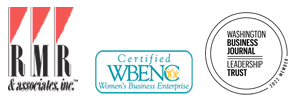Gaining the Attention of the Market: Why Great Creative?
By Robyn M. Sachs
President, RMR & Associates, Inc.
Quick, finish this sentence: “Snap, Crackle, ________, ________ __________!”
If you answered, “Pop, Rice Krispies” you are a perfect example of the effectiveness of advertising creative. This ad was created years ago and is revived again and again so that even today’s kids know the jingle. It scores well because the message is concise, memorable, benefit-oriented, frequent, and distinctly unique.
Of the five attributes, being distinctly unique is the most important. We are, after all, fighting for attention in a noisy world. Surveys show that people only give you two seconds to gain their attention. If you can’t stop them in that short time, you’ve wasted your investment and communicated nothing.
But before you start crafting jingles, it’s best to clearly define exactly what advertising is. Advertising is a means of paid controlled communications designed to increase profits. Properly done, good advertising will increase brand preference, increase product trials, and increase sales leads – all of which are designed to create more sales.
According to the Small Business Administration, the leading cause of business failures is “not having a sufficient number of buyers to produce consistent profits.” It’s simple. If you can’t sell your product over time, you won’t be able to keep your doors open. As exciting as it seems, advertising is actually a very sober art and science. It’s a means to an end, and that end is to increase profits.
The path to achieving that end starts with answering the following three questions:
- Who is my target market? By defining who your buyers are, you’ll be able to select the best media vehicle (print, television, radio, Internet, etc.) to reach them, which in turn determines the shape of your creative message.
- What do they want? Customers don’t buy what they need. They buy what they want. Research your prospective market as thoroughly as your budget allows. Many times, you can negotiate free or reduced-cost studies of your market from the media vehicle you pay to advertise.
- Why should they buy it from me? The reasons you list here will form the backbone of the creative that drives home your message. Your ad creative must quickly communicate your points of difference. Even small points of differentiation can become key selling points that lead to success (i.e. our client Subway and their “$5 Footlong” campaign).
Once you’ve answered these questions, it’s time to build creative that succinctly and uniquely conveys your message and a call to action. Great, successful creative must:
- Be driven by a defined purpose;
- Communicate to the correct target audience;
- Identify key benefits;
- Stop the reader with a unique personality or tone;
- Leave the customer with a call to action.
Here are some tips on building great creative products:
- Headlines. Make them concise, clever, and direct. When you think they’re perfect, test them. A simple change in a headline has been shown to give 10%, 100%, and as much as 1,000% more response.
- Benefit-oriented copy. When writing the ad copy, think facts, features, and benefits. Remember, it’s the benefits that sell the products.
- Communicate a personality or tone. Buying is an emotional decision, even if people don’t admit it. Create a personality or tone that stops potential customers, and then play to their emotional wants and needs. The current “Mac vs. PC” ad campaign is a perfect example of creating personalities and playing to customers’ emotions.
- Size or frequency? Choose the largest ad you can afford, and you’ll look big and “safe” to the consumer. But if you must choose between size and frequency, pick frequency. Remember the “Rule of Seven”: Consumers need 7 impressions over a 12-month period to receive your message.
- Provide a strong offer. Make your offer very clear and get it into the headline if possible. If not, don’t bury it. Offers that drive responses include discounts, free information, free samples and free product trials.
- Leave potential customers with a call to action. Tell potential customers exactly what you want them to do: Test the product. Call for information. Visit your website. Buy today. Leave your message ringing in your potential customers’ ears.
Know your target market. Find out what they want. Tell them why they should buy it from you through clever advertising that grabs their attention, sings your benefits, and tugs at their emotions. Repeat your message as largely and loudly as you can-at least 7 times in 12 months-and be sure to offer them a deal they can’t pass up. Finally, tell them exactly how to get more information or to buy your product.
Creating great advertising isn’t easy, and most ads don’t become famous. But if you follow these basic guidelines, you’re more likely to have success where it really counts: on the bottom line.
